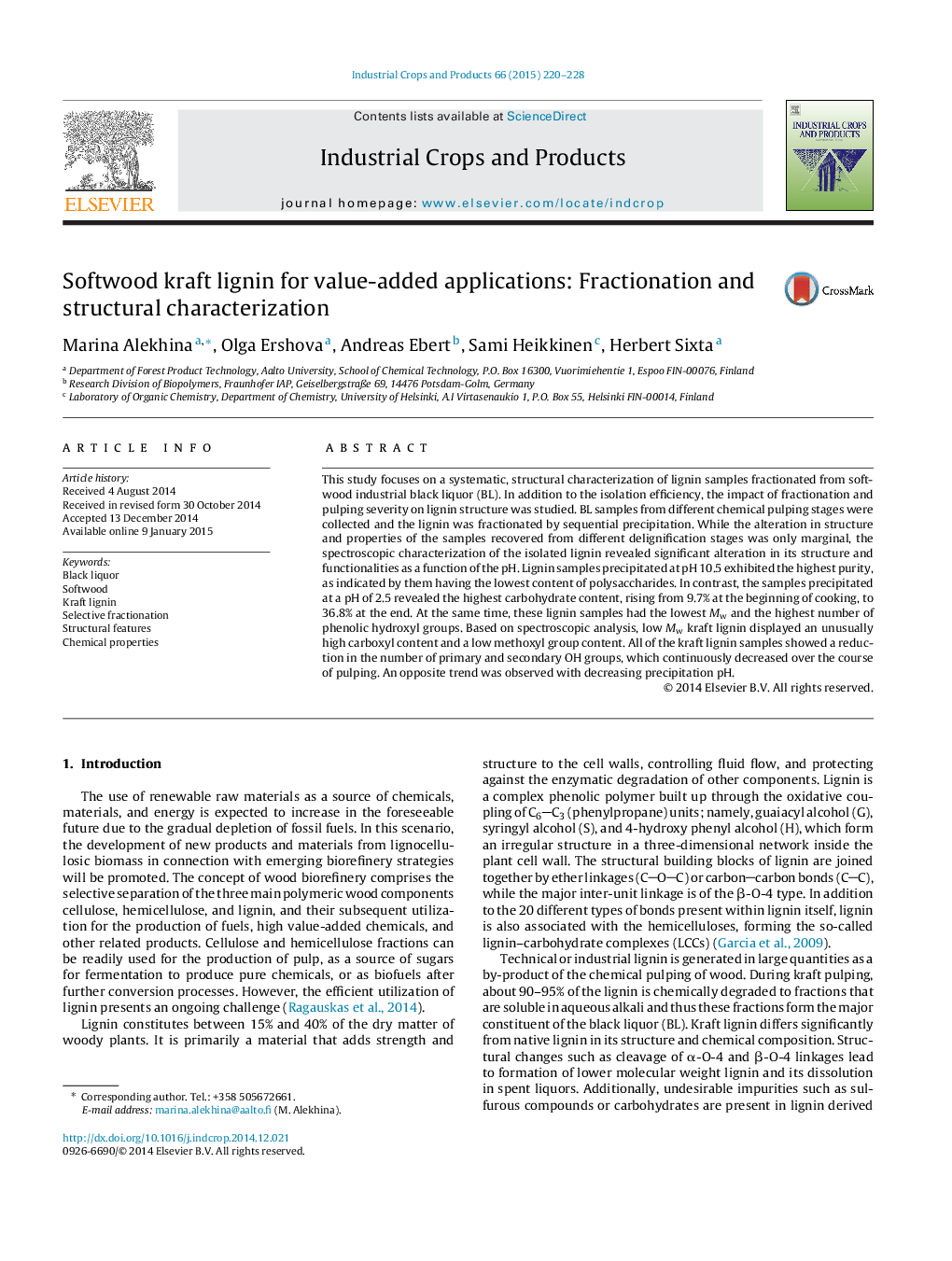| Article ID | Journal | Published Year | Pages | File Type |
|---|---|---|---|---|
| 4513218 | Industrial Crops and Products | 2015 | 9 Pages |
•Kraft lignin from different cooking stages was fractionated according to Mw.•Selective acid precipitation is an efficient method for lignin recovery.•Clear differences in the composition and the properties of lignin were observed.•Lignin precipitated at lower pH had more impurities.•Low Mw lignin displayed a high carboxyl and a low methoxyl group contents.
This study focuses on a systematic, structural characterization of lignin samples fractionated from softwood industrial black liquor (BL). In addition to the isolation efficiency, the impact of fractionation and pulping severity on lignin structure was studied. BL samples from different chemical pulping stages were collected and the lignin was fractionated by sequential precipitation. While the alteration in structure and properties of the samples recovered from different delignification stages was only marginal, the spectroscopic characterization of the isolated lignin revealed significant alteration in its structure and functionalities as a function of the pH. Lignin samples precipitated at pH 10.5 exhibited the highest purity, as indicated by them having the lowest content of polysaccharides. In contrast, the samples precipitated at a pH of 2.5 revealed the highest carbohydrate content, rising from 9.7% at the beginning of cooking, to 36.8% at the end. At the same time, these lignin samples had the lowest Mw and the highest number of phenolic hydroxyl groups. Based on spectroscopic analysis, low Mw kraft lignin displayed an unusually high carboxyl content and a low methoxyl group content. All of the kraft lignin samples showed a reduction in the number of primary and secondary OH groups, which continuously decreased over the course of pulping. An opposite trend was observed with decreasing precipitation pH.
